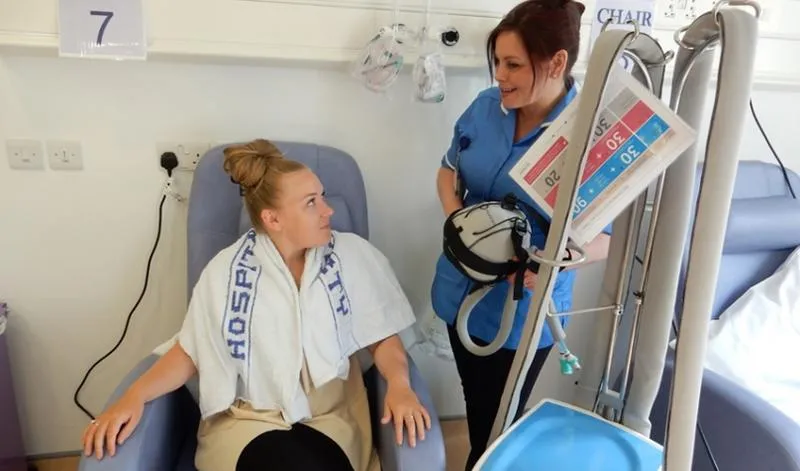
Chemotherapy fights cancer by targeting all rapidly dividing cells in the body. But because hair cells divide quickly, they come under attack – meaning hair can start to fall out within two weeks of treatment starting. Scalp-cooling reduces blood flow to hair follicles by up to 40%, preventing or minimising hair loss.
The old cooling machines required very low temperatures to be effective and didn’t always fit properly. The South East London Breast Cancer Trust, a charity founded by former patients, stepped in with a donation to buy three Paxman Orbis 2 scalp-cooling machines.
“It made a big difference", said matron for oncology, Catherine McGarry. "The newer cold caps fit much better, while the machines operate at three degrees higher than the old ones, which means more people can tolerate them.
The generosity of donors also enabled the unit to buy some much-needed extra computer equipment, two PCs and a laptop.
“Each patient’s chemotherapy regime needs to be carefully checked and documented before and during treatment", said Catherine. "We simply didn’t have enough computers to do this efficiently, which resulted in increased waiting times and added stress for patients.”